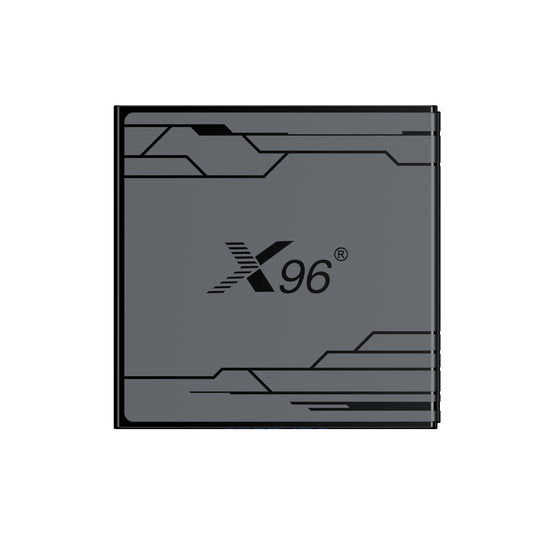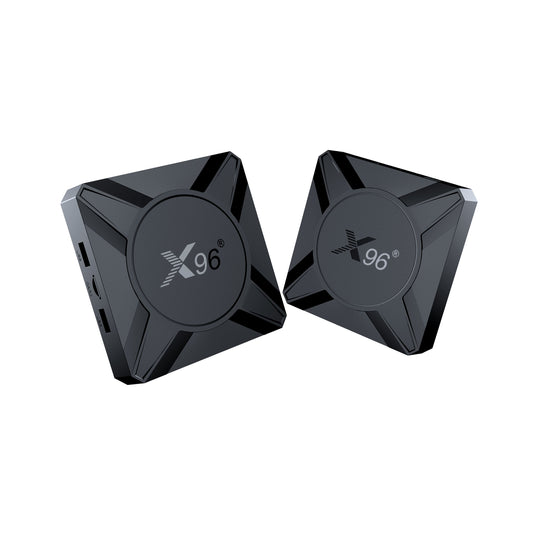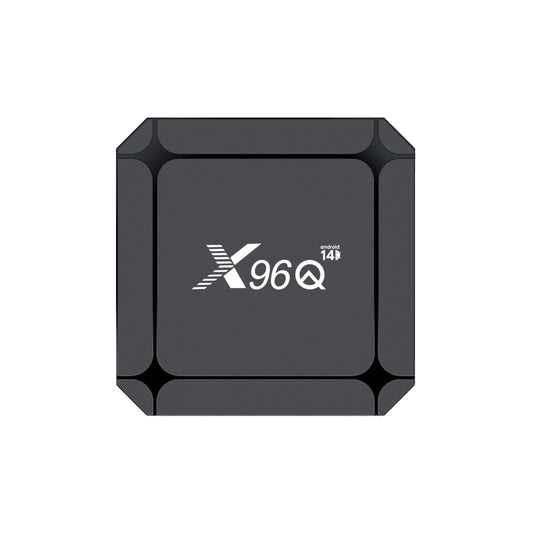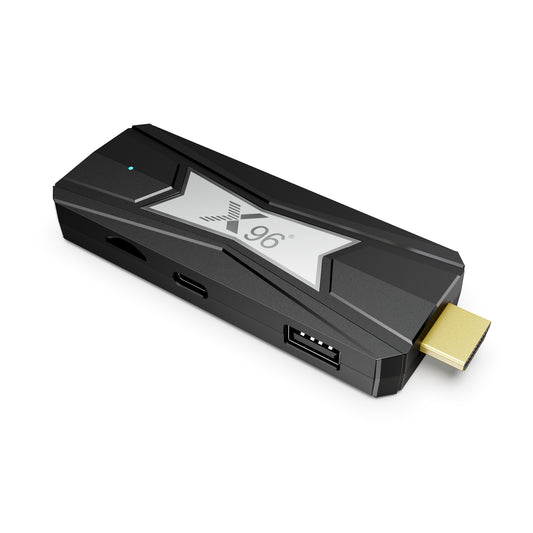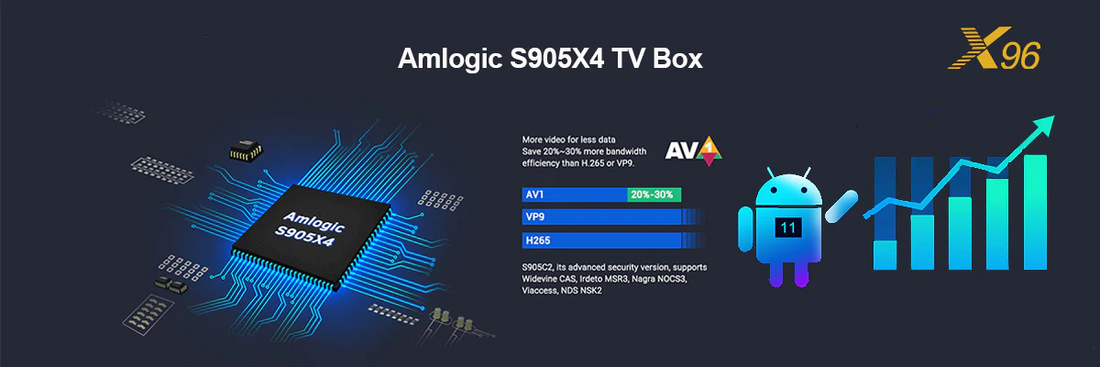
TV Box Amlogic S905X4 & Rockchip RK3528 VS Amlogic S905X4
The comparison of TV Box Amlogic S905X4 and Rockchip RK3528 vs Amlogic S905X4 highlights the strengths of these two chipsets in the field of media streaming. The Amlogic S905X4 is designed with a focus on power efficiency, smooth 4K media playback, and reliable multimedia performance, making it an excellent choice for high-quality entertainment purposes. On the other hand, the Rockchip RK3528 takes a slightly different approach, offering a well-rounded combination of processing power and advanced graphics capabilities, catering to a wider range of applications beyond standard media playback. Both chipsets are excellent for smart TV boxes but shine in slightly different areas depending on user needs.
1. Quad Core Amlogic S905X4
The specifications describe the Amlogic S905X4 chipset, often used in media streaming devices and smart TV boxes. Here's an explanation in English:
| CPU | Chipset | Amlogic S905X4 | ||
| Architecture | Quad Core ARM Cortex A55 | |||
| GPU | Chipset | ARM Mali-G31 MP2 | ||
| Architecture | OpenGL ES 1.1/2.0/3.2,OpenCL 2.0,Vulkan 1.1 support | |||
| RAM | Capacity | 4GB (2/4GB Optional) | ||
| ROM | Capacity | 64GB (16/32/64/128GB Optional) | ||
| External storage | USB Storage Devices | USB2.0, USB3.0 Support | ||
| Micro SD card | Supported | |||
| Software | ||||
| Operating system | OS Version | Android 11 | ||
| Language | Multi-Language | |||
| Multimedia | Video | Amlogic Video Engine (AVE) with dedicated hardware decoders and encoders Support multi-video decoder up to 4x1080P@60fps |
||
| Supports multiple “secured” video decoding sessions and simultaneous decoding and encoding | ||||
| Video/Picture Decoding | ||||
| VP9 Profile-2 up to 8Kx4K@24 fps | ||||
| H.265 HEVC MP-10@L5.1 up to 8Kx4K@24 fps | ||||
| AVS2-P2 Profile up to 8Kx4K@24 fps | ||||
| MPEG-4 ASP@L5 up to 1080P@60fps (ISO-14496) | ||||
| WMV/VC-1 SP/MP/AP up to 1080P@60fps | ||||
| AVS-P16(AVS+) /AVS-P2 JiZhun Profile up to 1080P@60fps | ||||
| MPEG-2 MP/HL up to 1080P@60fps (ISO-13818) | ||||
| MPEG-1 MP/HL up to 1080P@60fps (ISO-11172 | ||||
| RealVideo 8/9/10 up to 1080P@60fps | ||||
| Multiple language and multiple format sub-title video support | ||||
| MJPEG and JPEG unlimited pixel resolution decoding (ISO/IEC-10918 | ||||
| Supports JPEG thumbnail, scaling, rotation and transition effects | ||||
| Supports *.mkv,*.wmv,*.mpg, *.mpeg, *.dat, *.avi, *.mov, *.iso, *.mp4, *.rm and *.jpg file formats | ||||
| Audio | Supports MP3, AAC, WMA, FLAC, Ogg. | |||
| Image | HD JPEG、BMP、GIF、PNG、TIF | |||
| Network service | ||||
| Wi-Fi | Type | Support WiFi IEEE 802.11 b / g / n / ac | ||
| Frequency | Support 2.4G and 5G | |||
| Antenna Type | Two external antennas | |||
| Bluetooth | Bluetooth | Support BT4.X | ||
| Interface | ||||
| Charge | DC connector | DC IN(5V/2A) | ||
| Video output | HDMI | 4K*2K UHD Output, HDMI 1.4/2.0 | ||
| IR Reciver | 3.5mm Earphone jack | Remote Reciver Connect | ||
| Micro SD | External memory | Support | ||
| USB port | USB host | *1 USB3.0 *1 USB2.0 normal type | ||
| Ethernet | Ethernet | 1000M Ethernet | ||
-
Amlogic S905X4: This is the model name of the chipset. It's a high-performance SoC (System-on-Chip) designed for media and entertainment applications, supporting features like 4K video playback and advanced graphics.
-
Quad Core ARM Cortex A55: The CPU within the chipset consists of four cores based on the ARM Cortex-A55 architecture. It is an efficient and modern CPU design that focuses on power-efficient performance and responsiveness.
-
ARM Mali-G31 MP2: The integrated GPU (Graphics Processing Unit) in this chipset is the ARM Mali-G31, configured with two cores (MP2). It is built for small to mid-level graphics performance, suitable for casual 3D gaming, media rendering, and user interfaces.
-
OpenGL ES 1.1/2.0/3.2, OpenCL 2.0, Vulkan 1.1 support: These are the graphics and compute APIs supported by the Mali-G31 GPU.
- OpenGL ES is a graphics API widely used for rendering 2D/3D graphics on embedded systems like mobile devices and media players.
- OpenCL is a framework for writing programs that execute across heterogeneous platforms, allowing GPU-based compute capabilities.
- Vulkan is a modern graphics and compute API that offers high performance and better hardware optimization, targeted at developers aiming for advanced rendering.
This chipset is well-suited for mid-range devices such as Android TV boxes, digital displays, and other multimedia applications.
2. Amlogic S905X4 in TV Box Solutions
The Amlogic S905X4 system-on-chip (SoC) has emerged as a popular choice for modern TV box designs, offering a balanced blend of performance, energy efficiency, and multimedia capabilities tailored for home entertainment systems. Built on a 12nm process, this quad-core ARM Cortex-A55 processor integrates advanced features that cater to the demands of 4K streaming, gaming, and smart home integration. Below are key aspects of its application in TV box solutions:
1. High-Performance 4K Streaming
The S905X4 excels in decoding 4K@60fps HDR content, supporting formats like AV1, H.265, VP9, and H.264. This makes it ideal for streaming platforms such as Netflix, YouTube, and Disney+, ensuring smooth playback with reduced buffering. Its AV1 codec support future-proofs devices as streaming services increasingly adopt this bandwidth-efficient standard.
2. Enhanced GPU and Graphics Support
Equipped with the ARM Mali-G31 MP2 GPU, the S905X4 delivers improved graphics rendering for UI fluidity and casual gaming. Support for Vulkan 1.1, OpenGL ES 3.2, and OpenCL 2.0 enables developers to optimize apps and games for better visual effects and performance, bridging the gap between TV boxes and entry-level gaming consoles.
3. AI and Smart Features
The chip’s neural processing unit (NPU) or AI acceleration capabilities (depending on implementation) enable features like voice assistant integration (Google Assistant, Alexa), AI-powered image upscaling, and background noise reduction during video calls. This aligns with the trend of TV boxes evolving into AIoT hubs.
4. Connectivity and Expandability
HDMI 2.1: Supports 4K@120Hz output (theoretical) for future high-frame-rate content.
Wi-Fi 6 & Bluetooth 5.0: Ensures stable wireless connectivity for streaming and peripheral devices.
USB 3.0 + Gigabit Ethernet: Facilitates fast local media playback and network-attached storage (NAS) access.
5. Energy Efficiency and Thermal Management
The 12nm fabrication process reduces power consumption compared to earlier S905X variants, enabling fanless designs for silent operation—a critical factor for living room environments.
6. Versatile OS Support
The S905X4 commonly runs Android TV 11/12 or Linux-based systems like CoreELEC, allowing manufacturers to tailor software experiences. Its compatibility with Google Widevine L1 DRM ensures access to premium HD/4K streaming services.
Market Positioning
Targeted at mid-to-high-end TV boxes, the S905X4 competes with solutions like Rockchip RK3566 and Allwinner H616. Its AV1 decoding and Vulkan support give it an edge in markets where 4K adoption is accelerating, such as Europe, North America, and Asia.
Challenges
While capable, the Mali-G31 GPU limits heavy gaming performance, positioning the chip below flagship gaming-oriented SoCs like Amlogic S922X. Additionally, some implementations may prioritize cost over features like full HDMI 2.1 bandwidth.
Conclusion
The Amlogic S905X4 strikes a pragmatic balance for TV box manufacturers seeking to deliver 4K HDR streaming, light gaming, and smart home integration without excessive costs. Its support for cutting-edge codecs (AV1) and APIs (Vulkan) ensures relevance in an evolving market, making it a cornerstone for affordable yet future-ready entertainment hubs. As consumers demand higher-resolution content and smarter interfaces, the S905X4 remains a strategic choice for brands aiming to innovate within budget constraints.
3. Rockchip RK3528 VS Amlogic S905X4
Here’s a detailed comparison between the Rockchip RK3528 and Amlogic S905X4, two popular system-on-chips (SoCs) used in TV boxes and streaming devices. Both target the budget-to-midrange market but differ significantly in architecture, performance, and features.
| Feature | Amlogic S905X4 | Rockchip RK3528 |
| CPU | Cortex-A55 (+30% IPC over A53) | Cortex-A53 (aged architecture) |
| GPU/Graphics | Mali-G31 (Vulkan 1.1, OpenGL ES 3.2) | Mali-450 (OpenGL ES 2.0 only) |
| Video Decoding | 4K AV1/VP9/HDR10 | 4K H.265/H.264 (no AV1) |
| AI Acceleration | Supports voice assistants, AI upscaling | No dedicated NPU |
| Connectivity | HDMI 2.1, USB 3.0, Wi-Fi 6, Gigabit LAN | HDMI 2.0, USB 2.0, Wi-Fi 5, 100M LAN |
| Power Efficiency | 12nm process (cooler, fanless designs) | 22nm process (higher heat output) |
1. CPU and Process Node
1.1 Rockchip RK3528:
CPU: Quad-core ARM Cortex-A53 (64-bit)
Clock Speed: Up to 1.5 GHz
Process Node: 22nm
Architecture: Older Cortex-A53 cores (2012 design) optimized for basic tasks.
2.2 Amlogic S905X4:
CPU: Quad-core ARM Cortex-A55 (64-bit)
Clock Speed: Up to 2.0 GHz
Process Node: 12nm
Architecture: Newer Cortex-A55 (2017 design) with 30% higher IPC (instructions per clock) efficiency over A53
2.3 GPU and Graphics
Rockchip RK3528:
GPU: ARM Mali-450 MP2
API Support: OpenGL ES 2.0/1.1, no Vulkan or OpenCL.
Performance: Basic 2D/3D rendering, suitable for simple UIs and light gaming.
Amlogic S905X4:
GPU: ARM Mali-G31 MP2
API Support: OpenGL ES 3.2, Vulkan 1.1, OpenCL 2.0.
Performance: Modern GPU with better shader support, enabling smoother UIs, casual gaming, and Vulkan-based apps.
3. Video Decoding/Encoding
Rockchip RK3528:
Decode: 4K@60fps H.265/H.264, no AV1 support.
Encode: Limited to 1080p.
Amlogic S905X4:
Decode: 4K@60fps HDR10, AV1, VP9, H.265, H.264.
Encode: 1080p H.264/H.265.
4. AI and Smart Features
Rockchip RK3528:
No dedicated NPU (Neural Processing Unit).
Relies on CPU for basic voice commands or AI tasks.
Amlogic S905X4:
Includes AI acceleration (exact NPU specs vary by implementation).
Enables voice assistants (Google Assistant, Alexa), AI upscaling, and background noise reduction.
5. Connectivity
Rockchip RK3528:
HDMI: 2.0a (4K@60Hz HDR).
Wi-Fi: Typically Wi-Fi 5 (802.11ac).
USB: USB 2.0 ports.
Ethernet: 100Mbps.
Amlogic S905X4:
HDMI: 2.1 (supports 4K@120Hz theoretically, though often limited to 60Hz).
Wi-Fi: Wi-Fi 6 (802.11ax) in some implementations.
USB: USB 3.0 + USB 2.0.
Ethernet: Gigabit (1000Mbps).
6. Power Efficiency
Rockchip RK3528:
22nm process is less efficient, leading to higher heat generation.
Often requires passive cooling or small heatsinks.
Amlogic S905X4:
12nm process offers better thermals and power efficiency.
Supports fanless designs for silent operation.
7. Use Cases
Rockchip RK3528:
Best for budget 4K streaming boxes (e.g., basic Android TV sticks).
Suitable for users who prioritize cost over future-proofing.
Amlogic S905X4:
Ideal for mid-range Android TV boxes with 4K HDR/AV1 support.
Better for gaming (via Vulkan), NAS streaming, and smart home hubs.
8. Price and Availability
Rockchip RK3528:
Found in ultra-budget devices (e.g., ~50 range).
Often paired with 2GB RAM and 16GB storage.
Amlogic S905X4:
Used in mid-range devices (~100).
Typically paired with 4GB RAM and 32/64GB storage.
Conclusion: Which Should You Choose?
Pick Rockchip RK3528 if:
You need a cheap streaming box for 4K H.265 content.
Casual use (no gaming, no AV1).
Pick Amlogic S905X4 if:
You want future-proof 4K streaming (AV1, HDR10).
Plan to use Vulkan-based apps, light gaming, or AI features.
Need faster connectivity (USB 3.0, Gigabit Ethernet).
4. Conclusion
The Amlogic S905X4 outperforms the Rockchip RK3528 in nearly every aspect, targeting mid-range to premium TV boxes with its 12nm process, quad-core Cortex-A55 CPU (up to 2.0 GHz), and ARM Mali-G31 MP2 GPU. It supports 4K AV1/HDR10 decoding, Vulkan 1.1 graphics, Wi-Fi 6, and Gigabit Ethernet, making it ideal for future-proof streaming (e.g., YouTube/Netflix AV1 content), light gaming, and smart home integration.
The Rockchip RK3528, built on an older 22nm process with quad-core Cortex-A53 CPUs (up to 1.5 GHz) and a basic Mali-450 MP2 GPU, focuses on ultra-budget 4K streaming devices. It lacks AV1/Vulkan support and advanced connectivity, catering to users prioritizing cost over performance.

